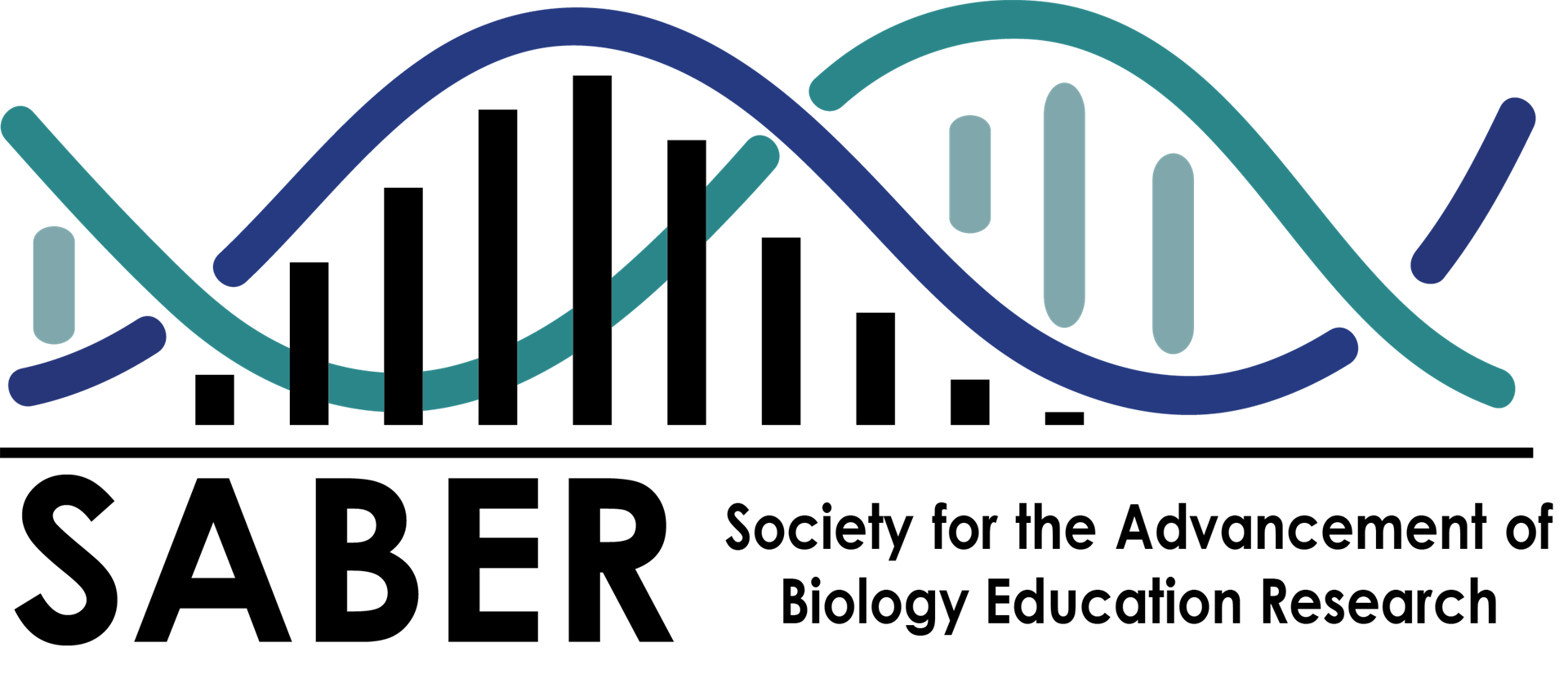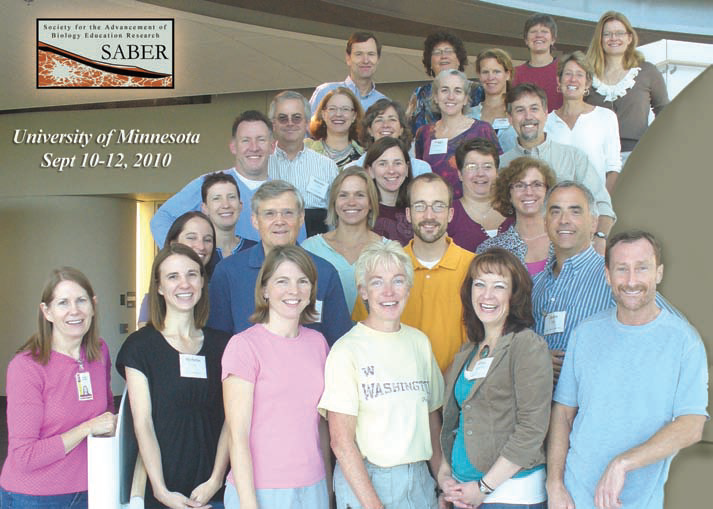Mission Statement
SABER is a scientific community whose members develop theory and generate evidence with the goal of improving post-secondary biology education. SABER fosters Biology Education Research (BER) and its dissemination.
Mission: The Society for the Advancement of Biology Education Research's mission is to transform biology education through research and practice. HistoryThe inaugural meeting of SABER was held in 2010 and included 29 invited participants who laid the groundwork for the Society we know today. This inaugural group was convened with support from a National Science Foundation (NSF) RCN-UBE Incubator grant (#0955572) written by Mary Pat Wenderoth, Clarissa Dirks, and Teri Balser. This meeting led to the formal creation of SABER, our original mission statement, and held the first annual conference in 2011. The attendees produced a meeting report that was published in CBE-Life Sciences Education in 2011. You can read the report by Offerdahl et al. (2011). Mary Pat and Clarissa were granted another award from the NSF (#1143545) which helped support the 2nd annual meeting in 2012. SABER meetings have been held in Bruininks Hall at the University of Minnesota since the inaugural meeting in 2010. This building was specifically designed to support evidence-based science instruction. SABER annual meetings and online presence have been led by Dr. Mary Pat Wenderoth since 2010. After the 2017 annual conference, Mary Pat convened a Steering Committee, comprised of 8 SABER members, to develop formal bylaws and policies, to organize and run an election for a leadership team, and to lay the groundwork for committees and other structures to support the mission of SABER. The first formal officers took office prior to the 2019 annual meeting, with Mary Pat serving as the inaugural Past President.
SABER Founding members at inaugural 2010 meeting (in alphabetical order): Teri Balser, Clarissa Dirks, Mary Pat Wenderoth, Janet Branchaw, Rob Brooker, Peggy Brickman, Malcom Campbell, Mark Connelly, Erin Dolan, Scott Freeman, Mark Hens, Jenny Knight, Kathryn Miller, Jennifer Momsen, Lisa Montplaisir, Erika Offerdahl, Marcy Osgood, Nancy Palaez, Becky Ruden, Jonathon Schramm, Michele Shuster, Karen Sirum, Amber Smith, Michelle Smith, Brian White, Devin Wilcox, William Wood, Robin Wright. [Photo credit: Becky Ruden]. SABER LogoSABER held a competition for the creation of a new logo in 2018. Over 25 entries were submitted. The SABER community voted on their favorites in an initial round of voting and made their final selection from the five finalists. Over 400 people cast votes! The winning logo was designed by Tari Tan, a Curriculum Fellow and Lecturer in the Harvard Medical School Department of Neurobiology. Dr. Tan provided the following rationale for her design:
|

